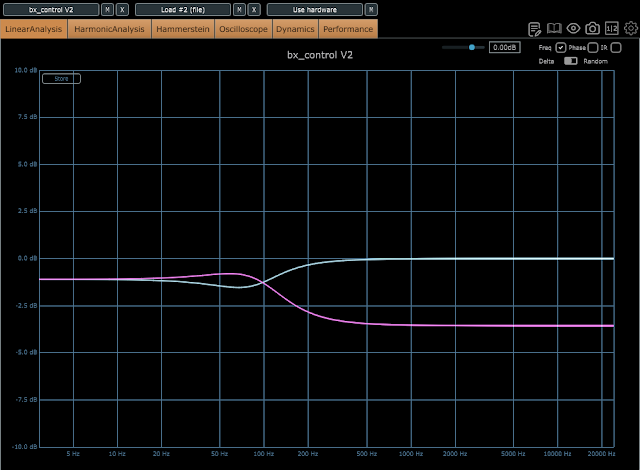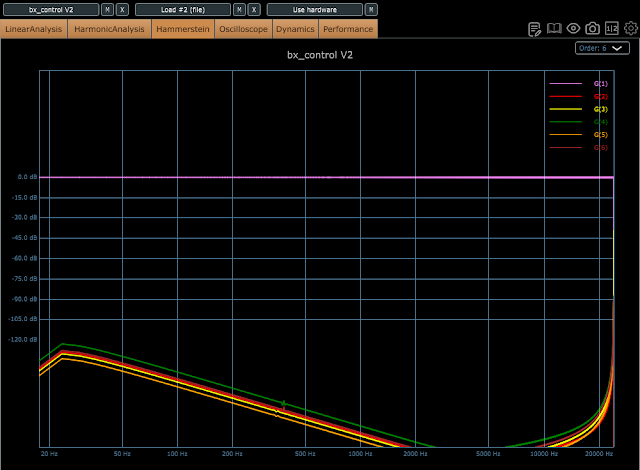BX_Control as an easy start
 |
| Gain at 0 dB |
 |
| Everything starting at 0 |
The gain has extremes of + and - 12 dB so let's measure if this scale on the knob is correct.
 |
| Gain matching 12 dB exact |
We see on the graph that it's 12 dB exact so also a peak performance of the plugin. No strange behavior at all so I begin to see why I like this plugin so much, it gives what it promises so far. Let's see what the mono maker gives us.
 |
| Monomaker, second from the right |
The monomaker should give a visible change in the graph at 95 Hz because that's the frequency we chose to be the top value of the mono signal. Below the graph.
 |
| The bend at 95 Hz |
At 95 Hz we see a neat bend where the signal converts from stereo to mono. also you see a little power lift because the signals are combined from the stereo signal.
In the next test we will see what the balance does.
 |
| Balance adjusted to the left |
We have ajusted the balance to the left and it is visible in the graph. When te balance is 0 the two signals are nice overlapping each other. When shifting the balance the signals for left and right bend.
 |
| Balance shift between left and right signal |
The graph is neat and clean aas expected. On the left of the graph you can se the effect of the monomaker. The distance between the signals widens after 100 Hz.
Hammerstein measurement is done with 6 frequencies. For an explanation of this method you can go to Antonin Novak. In short, this means that several higher harmonic frequencies are compared with each other with an impulse and a response. 6 frequencies have been measured here. the better the components, the less deviation there is between the graphs.
 |
| Hammerstein Graph |
As you can see here, there is little deviation between the 6 different graphs, which indicates a good quality of the plugin.
 |
| Harmonic Distortion |
Also the THD shows no signal so the isn't any, the level is more then -300 dB at 1000 Hz, so not recognizable.
We can conclude that in features and technically this is a great plugin!


Comments
Post a Comment